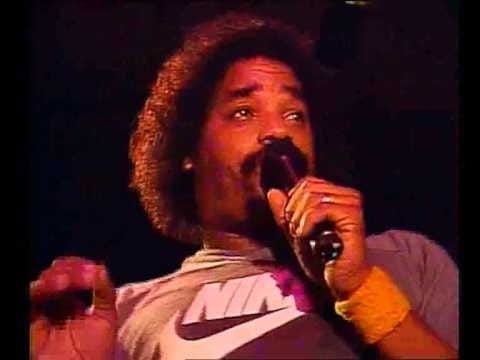Today’s is a long one, as we dive into a few media theories. Apologies in advance.
In his seminal book, “Amusing Ourselves to Death,” the scholar Neil Postman argued that as society moved to a post-typographic world to the Age of Television, it “dramatically and irreversibly shifted the content and meaning of public discourse, since two media so vastly different cannot accommodate the same ideas.”
(He opens the book to argue that Huxley’s Brave New World is the dystopian victor against Orwell’s 1984.)
The idea, he wrote, was that as the influence of print drops, how society views issues of the day, “the content of politics, religion, education, and anything else that comprises public business must change and be recast in terms that are most suitable to television.”
Printed words don’t matter anymore. It’s all about the sight/sound/motion of TV. Postman was post-text before it was all the rage among certain media celebrities.
Today, however, we live in a post-TV world. We are in the Age of Social Media, where the production of image-based content now dictates how we view the world, in a more hyphenated if not holistic (let alone hyper-metabolic) way.
Postman laid out how the Age of Television ushered in an era where “discourse is conducted largely through visual imagery,” to the point where we not only converse, but think in images.
“The emergence of the image-manager in the political arena and the concomitant decline of the speech writer attest to the fact that television demands a different kind of content from other media,” he wrote. “You cannot do political philosophy on television. Its form works against the content.”
The past eight days (if not the past four years) have shown this to be inverted. Political philosophy can indeed be done through the moving image; we are watching the most political philosophy on our screens, both large screen and small screen, constantly.
But instead of it coming solely from the political elite, the elected official or the media brahman, it’s coming from where political power ultimately resides: the people.

I’ve been thinking about this a lot recently, as I’ve been watching the protests not on TV but on Twitter. Two decades ago, as the internet popped, we talked about the democratization of media, that anyone with a keyboard and an internet connection can be a journalist. There’s a cottage industry of academics who tried to make “citizen journalist” happen. In 2020, though, there’s some merit to it. We are watching Americans show versions of truth through the videos they capture on their phone, and it’s setting the national agenda.
It’s the synthesis of years of technological advance and societal movements: There's something to be said that without Twitter, Facebook, YouTube, camera phones, etc we would not be witnessing what black people have been suffering under for the last 400 years.
A Twitter activist who has grown an ardent following in the Trump era put together a supercut of police brutality during recent protests told the New York Times: “Other people have said this before me, but none of this is new. It’s just finally being recorded.” (More on this NYT story in a moment.)
A friend emailed me asking if I’ve thought about how historically we’ve had TV and photographs and music and written accounts from many black people about the aggression against them; that there have been “hundreds of thousands of artists, journalists, activists, who have long documented the experience of racism and white supremacy, but just weren't really being heard by the masses.”
While we have had written accounts of aggression against black people during the first 350 years of American history, the media, owned and operated by white men, was always a gatekeeper between those accounts and the public. You had to buy a book in a store that probably didn’t sell it; you had to watch it on TV on a network that probably didn’t air it. Yes, some, like Douglass or Baldwin got through to the masses. Most didn’t. And this is what makes today’s technological age that much more important: everyone having a smartphone now means that those barriers are destroyed.
Who controls the message, both creation and distribution of, are just as important as who receives it. In 1963 Alabama or 1968 Chicago or 1992 Los Angeles, the images we saw were narrated by people who were a disembodied voice, at best. And only for BIG moments. A black man getting dragged out his car in rural Kentucky in 1934 didn't stand a chance. Today, that man is pressing record on his phone and uploading, often live, to a potential audience of millions.
But the social media moment also addresses Uses and Gratifications Theory, a media effects theory that looks at how people use media. (Good Wikipedia entry here.) It’s lined up in an equation: Your beliefs and values determine the gratification sought, which leads us to where we get our media.
So for example, as Stephen Littlejohn writes in “Theories of Human Communication,”
“If you believe that sitcoms provide entertainment and you evaluate entertainment as good, you will seek gratification of your entertainment needs by watching sitcoms. If, on the other hand, you believe that sitcoms provide an unrealistic view of life and evaluate such content as bad, you will avoid viewing them.”
Two pieces in the New York Times yesterday touched on this notion, through the videos flying around social media about the protests.
From a reported piece (the one quoted above) about the spread of videos:
Mutale Nkonde, a fellow at the Berkman Klein Center for Internet & Society at Harvard University, said that Mr. Uhl’s video “really reinforces that black protests, white protests and all social justice protests generally are not violent in nature. It moves us away from the ‘there are bad people on both sides’ or ‘there are good people on both sides’ argument and really highlights law enforcement’s aggressive attitude toward black people displaying their rights.”
In an excellent opinion column, the writer stumbles into Uses and Gratifications Theory:
Given that we live our lives online via algorithms tailored to our interests, it’s difficult to describe any online experience as universal, but the scale of these protests feels all-encompassing in a way that I’ve never experienced: a singular, collective trauma dominating our national consciousness. There are no other channels to watch, no distractions. We must bear witness.
The piece goes on to diagnose the consequences of an open environment to bearing witness:
But one cannot watch the protests play out online without also watching trolls and political opportunists seize this same footage to falsely construct an alternative reality. What I see as hundreds of righteous protests and countless overreaches by law enforcement are repackaged by others as proof of lawlessness and chaos and an excuse for further violence. Footage is taken out of context and unconfirmed rumors are used to stand up conspiracy theories and muddy the waters while the most violent confrontations become ammunition to stoke racial hatred. The very footage taken by journalists as well as protesters as a tool to document systemic abuse is exploited on the same platforms to give license to further abuse.
So as we think in images, and we use the language of the internet to describe our realities, remember Postman: “Every medium of communication, I am claiming, has resonance, for resonance is metaphor writ large.”
Thank you for allowing me in your inbox. If you have tips or thoughts about this newsletter, drop me a line.
Frank Zappa, “Be In My Video”
Some interesting links:
Former NBA player Stephen Jackson makes it his mission to humanize his friend, George Floyd (WSJ)
Gutted newsrooms juggle pandemic and protests: 'I volunteered because somebody has to sleep sometime' (CNN)
Don’t Fall for the ‘Chaos’ Theory of the Protests (The Atlantic)
R.I.P. Civil — Lessons from a failed startup (Poynter)
Washington Post makes major move into local news (Axios)
AMC Networks, The Weather Channel Join OpenAP Consortium (Adweek)




Thought-provoking post!
When it comes to technology, I'm a Heideggerian: “Everywhere we remain unfree and chained to technology, whether we passionately affirm or deny it."
I enjoyed the honor of interviewing Neil Postman for a newspaper many years ago. He was generous to a fault with his time.
Postman told me that he believed only formal media studies could help us see that we're in chains; without studying media, we're hopeless as citizens, because, like fish in a fishbowl, we can't step outside our media-saturated environment.
``Media education involves understanding the role technology plays in shaping cognitive habits, political ideas, and social behavior,'' he said.
Postman then explained what comprises media studies entail.
Media studies entail, among other things, monitoring your own consumption of media, to see how the different media structure your experiences, order your time, and stimulate your senses.
Media studies also entail learning to look for the ways in which the various media portray values, ideas, and stereotypes; and how messages are shaped by owners, advertisers, producers, editors, publicists, political handlers, and the many other professionals who work in what Postman called the ``consciousness industries.''